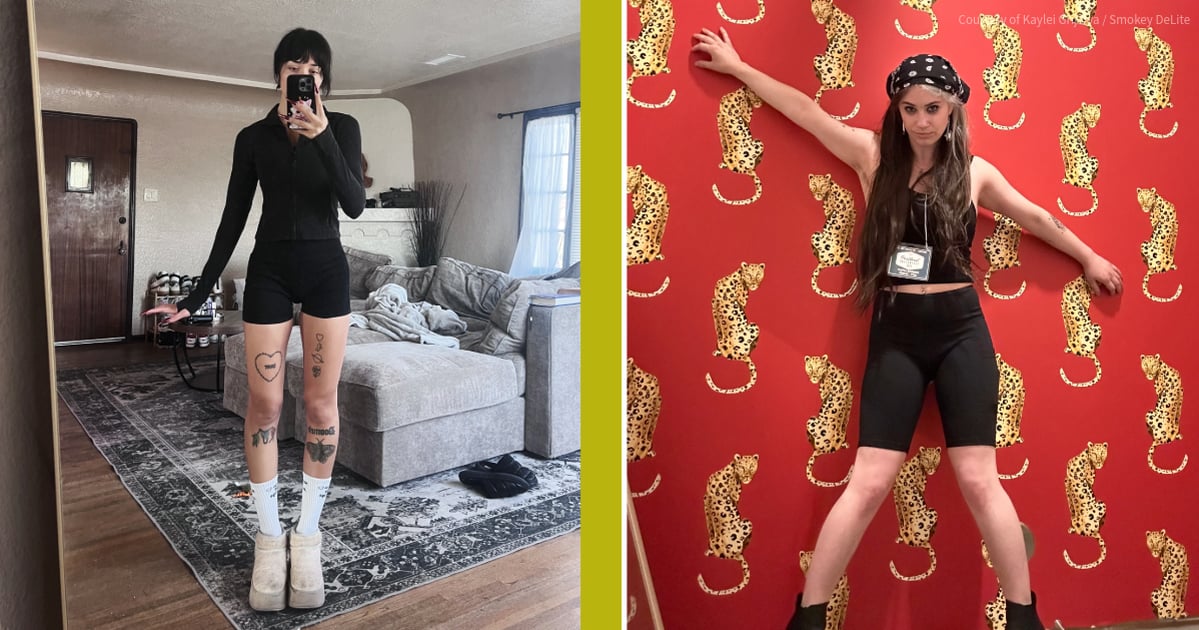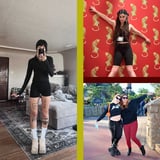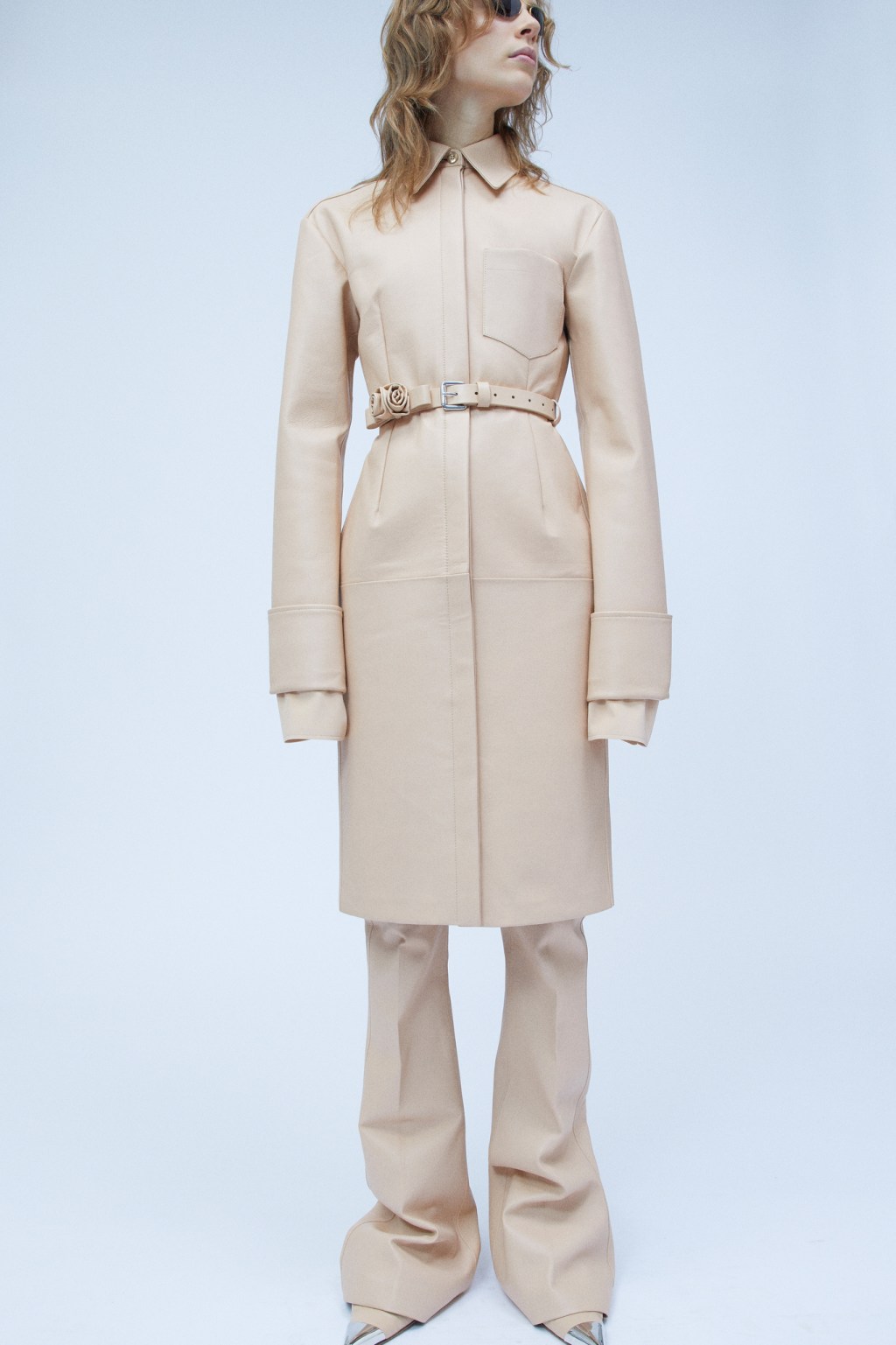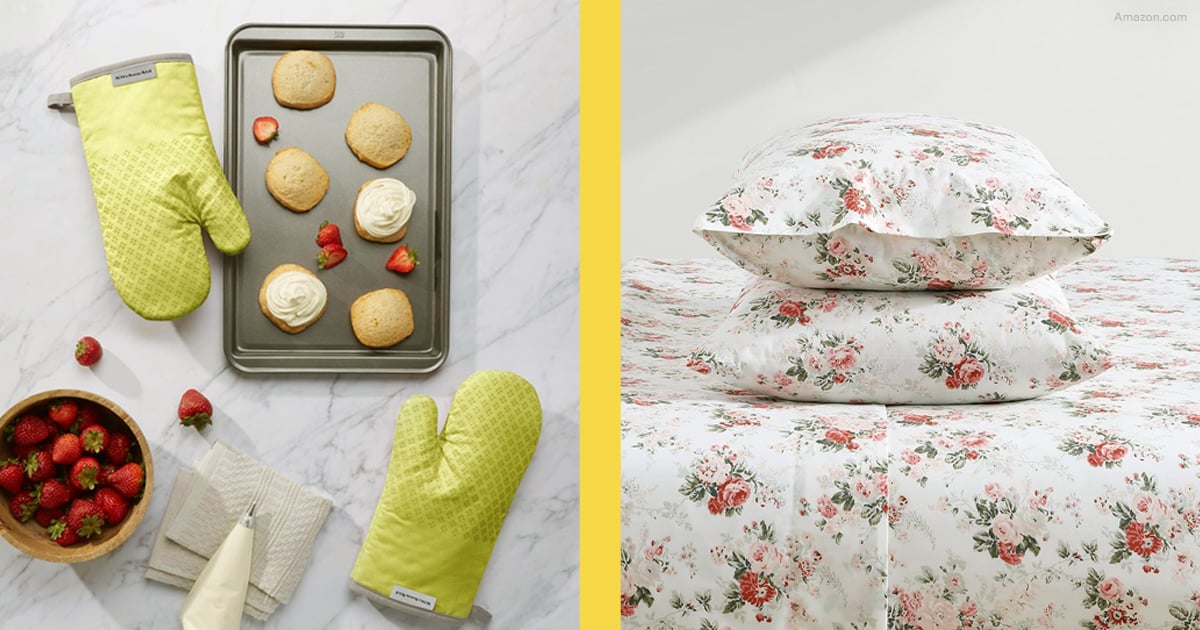I’m still not sure how I stumbled upon “Halara goth” TikTok, but the algorithm works in mysterious ways. In case our FYPs aren’t aligned, a Halara goth is someone within the gothic subculture who frequently wears athleisure and goth-letic clothing (whether they’re working out, or just trying to stay comfy). To those outside the goth community, this may not seem like a major faux pas. But to gothtok, it’s definitely up for debate.
“There’s no such thing as ugly goth/alt clothes,” begins a video from TikTok creator Shaezilla. But then a clip with the words “goth athletics” and “Halara outfits” pops up, as if to prove the initial statement wrong. In the comments section, hundreds of people defend their love for goth-letics, saying it’s more functional, comfortable, or practical (even if it’s not to everyone’s taste). Eventually, Shaezilla edits her caption: “Wear what you want, I wear really insane dumb things,” she writes. “But I’m not a fan of the gothletic, goth-leisure style, no matter how comfy it is.”
In an August TikTok, creator Smokey DeLite offers an alternative perspective. [“I work a physical job where I’m lifting things constantly, pushing things around – a very physical [type of] job,” she says. “So every day I wear athletic, black clothes. And I’m sorry if that’s not goth enough for you.”
Shaezilla’s video centered around personal preference, but calling out goth-letic clothing (and Halara as a brand) clearly sparked a much bigger conversation. “Halara is a fast fashion brand, and goth has always been a very DIY subculture; taking items and sewing different pieces of lace or trim or beads on it, or putting it back together with safety pins, distressing it, throwing it on the lawn,” DeLite tells Popsugar. “I think what a lot of goths felt kind of attacked about is that they sell a lot of black basics stuff that you can just throw on.”
The question on our minds: if goth-letic clothing is so contentious . . . what do goths wear to work out? Read on for our full investigation.
The Goth Ethos
For goths like Shaezilla, the problem with being a Halara goth isn’t the clothing itself – it’s the corporatization and commodification of goth culture. “I have nothing against wearing comfortable athletics,” she tells Popsugar. Her main point is that companies will “slap on the tackiest pumpkin print” just to capitalize on the goth subculture. DeLite doesn’t disagree.
“I think Halala is a brand that is fast fashion, which we’re not crazy about,” she says, in reference to the goth community. “It’s just everywhere, so it’s not exclusive or special in any way.” At the same time, she acknowledges that brands like Halara may be more accessible to people who can’t afford expensive goth clothing. “I don’t own a lot of their clothing, but I have a pair of [Halara] pants, and they’re stretchy and comfy,” DeLite says. “I feel like they make comfortable, functional basics that some people might buy if they’re on a budget.”
Content creator Kaylei Grijalva has a tip when it comes to avoiding brands that commodify goth culture: don’t solely shop for clothes at companies that are branded as “alt/goth,” she says. “I think you can find clothes that align with your aesthetic anywhere these days – especially when the basis to all things alt/goth is just black/dark colored clothing.”
“It’s simply not practical. And I would actually get hurt.”
Of course, it’s not always feasible to show up in full goth attire at all times. Back when DeLite worked for a fashion company, she often wore full goth makeup, big flowy skirts, and platforms as high as she wanted. Now, in a more physical job, her style has evolved. “It’s simply not practical. And I would actually get hurt,” DeLite says. “I wear platform boots to work, but I’ve had to tone down. I only wear pants. I don’t wear a lot of jewelry because it could get caught on things, and I have to wear a radio, so I can’t wear a lot of earrings.” For DeLite, goth-letic clothing is a matter of practicality – it doesn’t make her any less goth.
So, What Do Goths Wear to Work Out?
While the Halara goth debate is alive and well, there is no rule book for what goths should wear to work out. On TikTok, the goth gym girlies are rocking everything from oversized t-shirts to patterned sets. “My workout outfits range from cute, matching sets to band shirts I’ve cut into muscle tanks. I switch it up depending on my workout,” Grijalva says. “My go-to is typically black biker shorts and either a sports bra or muscle tank.” And yes, it’s 99 percent black.
Shaezilla prefers to get her cardio in with long walks. “So actually, I wear my four or five-inch platform Demonia’s,” she says – but she’ll also wear black Nike sneakers (if she really needs them). Band t-shirts and sweatpants from Dead Man Co. are a few other workout staples for Shaezilla.
“So actually, I wear my four or five-inch platform Demonia’s.”
“Aesthetically, [to be your] full goth self is a lot of work,” DeLite explains. “It’s a lot of time, and it’s not always convenient or conducive to what you do on a day-to-day basis.” What happens when you look the same as the gym-goer who just happened to reach for all black that day?
This is something Grijalva can relate to. “It’s hard when the alt/goth community has little to no crossover with the fitness world,” she tells PS. But clothes have to serve a purpose – especially in a workout setting. “Wearing uncomfortable clothes to fit an aesthetic is where I draw the line,” Grijalva says. “My running attire is the furthest thing from the typical alt/goth aesthetic, but I can guarantee you the last thing I’m worried about while running half marathons is if I looked a certain way while I did it.”
In terms of functionality, Shaezilla has mixed feelings. “I mean, I could tell you right now, I am sitting in black sweatpants and a black t-shirt working from home,” she says. But does she also wear towering shoes and get chains from Home Depot to wear around her waist? Absolutely. “I only have one life, and I just really dreamed of doing all these things,” she says. “I definitely encourage everyone to be comfortable, but for me personally, I want the excuse to be able to dress up.”
The Bottom Line
From its inception as a genre of literature, to its modern roots in music and fashion, goth goes far beyond aesthetics – that’s also what makes the Halara goth conversation so nuanced. Critics of the Halara goth style might point to the brand’s fast fashion practices, or decry the lack of DIY. Others might call it plain ugly. But at the same time, Halara offers affordable, functional basics that actually make sense to move in (no disrespect to those five-inch platforms). “The best part of being an adult is you can dress however you want,” Shaezilla says. “The goth scene is not exclusionary.”
DeLite understands that it can be hard to commit to activewear when everyone else on your FYP seems to be dressed in their full goth attire every single day. “I totally understand where people would feel like they’re letting something go, or that they’re not doing the most,” she says. “But that’s not real life.”
The truth of the matter is, you can’t always work (let alone work out) in full goth attire. While we admire the commitment, jogging in a corset and platforms is not necessarily something we’d recommend (even Lenny Kravitz’s leather pants are dicey). “I think there’s a common misconception that once you identify yourself as ‘alt’ or ‘goth,’ you have to constantly dress to that aesthetic,” Grijalva says. “It’s a lot of unnecessary pressure, especially when fitness is just about taking care of yourself and your health.”
The bottom line: goth-letic clothing might not be to everyone’s taste, but as long as it’s safe and functional, we’re here for it. “I have to remind myself that the gym doesn’t always have to be a fashion show, and no one is going to question if I’m a ‘poser’ for wearing a hot pink sports bra,” Grijalva says. “Life is too short to not wear whatever the heck you want.”
Chandler Plante (she/her) is a social producer and staff writer for the Health & Fitness team at Popsugar. She has over five years of industry experience, previously working as an editorial assistant for People magazine, a social media manager for Millie magazine, and a contributor for Bustle Digital Group. She has a degree in magazine journalism from Syracuse University and is based in Los Angeles.



